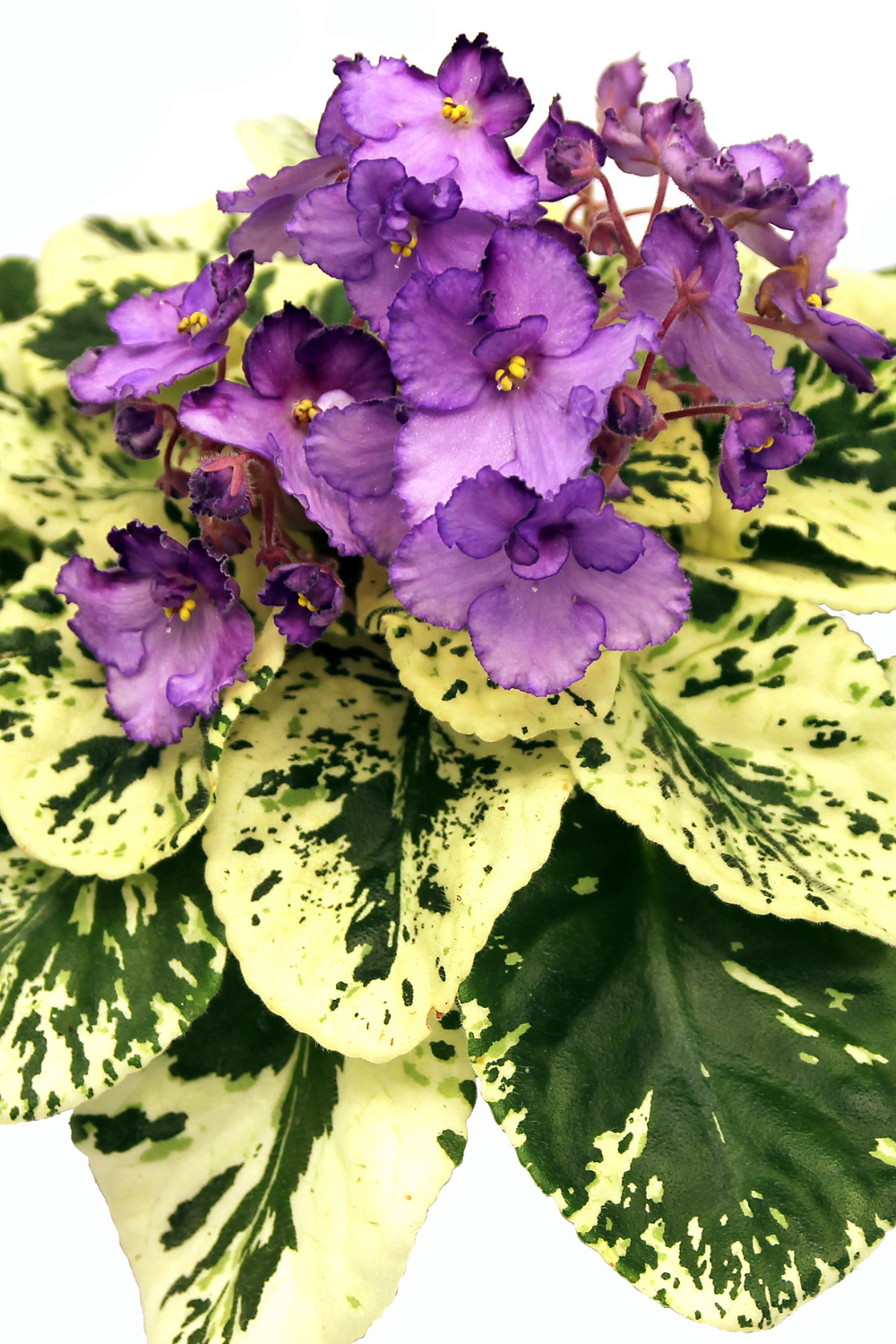I will admit that keeping houseplants alive has not always been a success for me. I had to learn because I was not born with the proverbial green thumb. I could usually keep things like pothos alive because, really, you can hardly kill one! But anything else was a struggle. Until I had a revelation. Plants are living, breathing creatures. They need certain things to live. Sometimes they need very specific things to thrive. I was simply not meeting their needs. It changed everything!

My specialty is African Violets. And I am constantly asked how I do it. Well, you simply give them what they need: a decent, well-drained soil (they HATE wet feet!), water, the occasional fertilizer, and lots of bright, filtered sunlight. Easy, peasy! I feel your skepticism! Really, they are very easy to grow.
First things first: read about how to care for African Violets. Then:
- Choose a nice, healthy plant from a reputable place.
- It should be in a good, well-drained soil. If not, repot it in growing medium that does not stay waterlogged.
- Make sure the plant is pest-free. AVs are susceptible to aphids. Look under the leaves and along the stems.
- Look for uniformity in the circlet of leaves and that they are not limp.
- Don’t be afraid to ask for help from the seller.
- Keep the new plant isolated for a couple of weeks just in case it does have some sort of disease or pest that you haven’t noticed. You don’t want to spread that through your entire plant population.
- Choose a nice sunny location. It could be in any window as long as the sun will not shine directly on the leaves. They will get sunburned and they don’t like it!
- Dappled sunlight coming through a west or south window is great.
- North is safe if it allows enough light.
- East is usually the best, but it always depends upon your location and window placement.
- If necessary, use supplemental artificial light.
- Plants always grow toward the light, so in order to keep your plants growing uniformly, give them a quarter turn in the same direction every few days.
- Watering. There are several ways to do this but the key is to NOT overwater. I cannot stress this enough. AVs are better off with less water than more. I have killed more plants by this one action than anything else.
- They are susceptible to root rot. And they will look great from the top until one day, poof, you realize they are dead and their roots have completely disappeared. There is no coming back from this! So take care.
- Feel the soil with your finger.
- If it is even slightly damp, don’t water.
- If it is dry, give a small amount.
- I water from the top with room temperature water – this is important – and let the plant sit for about an hour. Then drain off any excess water that has collected in the drip pan. NEVER let them stand in water for an extended period of time. The soil will become oversaturated and cause all sorts of problems.
- Another option is to water in the drip pan and let the plant soak up water from the bottom. Just remember to drain off any excess water after about an hour.
- There is no set rule about how often to water your plants. It depends so much on the conditions within your home. Check them every day until you know what they need.
- Of course, some people solve the overwatering problem by using self-watering pots. I have less luck with this option because I am a ‘hands-on’ grower. But it is a great option for people who travel. There are lots of these kinds of pots on the market and they usually come with instructions.
- I use a liquid fertilizer that I put in the water every time I give them a drink. I find it is easier and more consistent. Use one that is specifically formulated for African Violets and follow the directions.
- If, for some reason, you feel that you MUST repot your AV, always use a 4” plastic pot.
- African Violets have a small root system and, unlike some other plants, the size of the plant does not determine the size of the pot.
- Always use plastic. Never pot directly into decorative or clay.
- If you don’t like the look of the plain old plastic pot, set the whole thing down in a pretty container for display.
- Check often for pests. I seldom have this problem but if I do find something, I usually just drench the plant with water.
- Aphids can be washed off with the spray attachment on your kitchen sink or bathroom shower.
- If there is a more sinister problem, I prefer something organic like Safer’s Soap. Again, drench it, both on top of the leaves and underneath and along the stem.
- If the culprit is gnats, you will need to treat the soil because that is where they lay their eggs and hatch.
- I know some of you are thinking, ‘I’ve been told that AVs don’t like to get their leaves wet.’ This is only partially true.
- Sometimes, AVs need to be sprayed down to remove bugs or dirt. Sometimes, they need a good misting to refresh their leaves, especially if the air in your home is less humid.
- The key is to let them dry before placing them back in their sunny location. If the leaves are wet when the sunlight hits them, they will spot.
- It does not normally do any real damage but it is unattractive. And, if you plan on showing your AV, it will be a mark against you.
- Care for your plant.
- As they grow, they naturally lose old leaves and they don’t usually fall off by themselves. They just get limp and hang over the side of the pot, looking pathetic. Go ahead and remove them and throw them away.
- Keep old leaves and spent blossom stems out of the pot. Any debris on top of the soil will encourage disease and pests. Keep it clean.
- Likewise, keep the leaves free of dust and dirt. I use a clean makeup brush to gently whisk away anything that gets on the leaves.
- Keep in mind that lotions and oils on your hands may damage the leaves too.

So, there are the basics of growing African Violets in your home. Good luck and enjoy. If you have questions, you can always reach out to me here. Happy Gardening!
